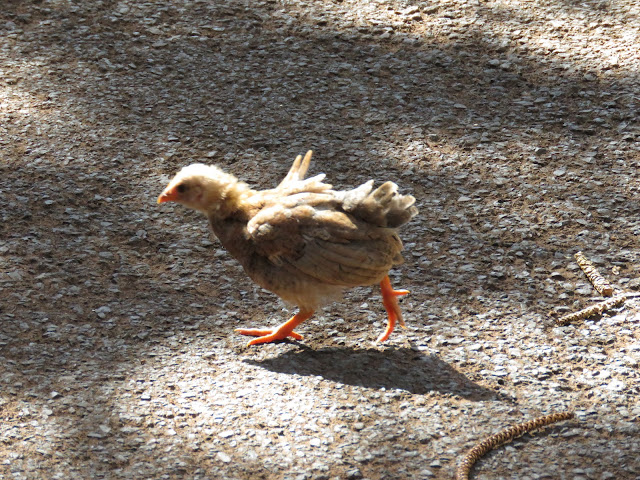When Glenda Jones asked me to join her for some birding on O'ahu, I was quick to say "Yes." We worked as a team on planning; I did the bird research and she mapped out the best routes to reach our destinations.
Honolulu is the largest city in the middle of the Pacific Ocean with over a million people living there.
At the height of a bad chest cold when we departed last Monday, Glenda recovered quickly once we arrived and started birding.
Since we didn't see a great number of species (especially coastal birds due to high winds, I think), I'll not do a daily report but rather share pics of the birds we saw just about every day. And, were they special!!
The WHITE TERN (FAIRY TERN) topped our list as a bird to see.
 |
| WHITE TERN also called FAIRY TERN - light, swift and beautiful |
PACIFIC GOLDEN PLOVER were on our list from just about each of the 19 locations visited. They will soon be taking off for their Arctic breeding grounds where they arrive in late April/early May. So, we were lucky to have seen them in their full breeding plumage including that white racing stripe from the base of its bill, over the eye and down along the wings and flanks. Handsome bird, indeed!
 |
| PACIFIC GOLDEN PLOVER |
 |
| Yellow Hibiscus or Alamanda? |
RED-CRESTED CARDINAL was another favorite and frequent species.
 |
| RED-CRESTED CARDINAL |
 |
| In foreground, with picnic left-overs |
 |
| ZEBRA DOVE - striped nape, chest and belly (more petite than SPDO) |
 |
| SPOTTED DOVE - large, with pinkish hue on face, chest and belly. Spots on nape. |
 |
| Photo by Glenda Jones |
 |
| Action on the Pacific |
 |
| ROSE-RINGED PARAKEET (above & below) |
 |
| Photo by Glenda Jones |
 |
| From a distance they appeared to be a flock of sparrows or finches |
 |
| COMMON WAXBILL Red bill and eyestripe |
 |
| Both above photos by Glenda Jones |
 |
| RED JUNGLEFOWL - everywhere! |
 |
| Junglefowl chick |
 |
| COMMON MYNA at nest |
I was surprised to see this species on our trek up to Kaena Point on Day #2. Usually favoring human habitat, here they were out on the rocks above the Pacific. When not eating human scraps, they live on insects and invertebrates (worms, snails flies). Thus, there was food at their Pacific habitat.
 |
 |
| This Myna was taking a shower in the spray of breaking waves! |
 |
| Glenda making her way up to Kaena Point SP Preserve |
 |
| High on a ridge above me, a LAYSAN ALBATROSS on nest. |
 |
| Young LaAl trying out its wings |
 |
| Adults watching their young! |
 |
| Hard to photograph due to their speed. Many flew low to the ground and right overhead. Photo above shows the Laysan Albatross specific underwing pattern. |
 |
| Length of Layson Albatross body: 32" Wingspan: 77-80" |
While I was out in the Preserve, Glenda was collecting some other important birds, including a BLACK-FOOTED ALBATROSS!
 |
| BLACK-FOOTED ALBATROSS |
 |
| BROWN BOOBY |
Saw some local thrill-seeking young men out on a rock. They showed off for us.
Hiking back down at mid-day, we worked up the only sweat of our trip during which ambient temperatures were consistently between 70s & 80sF.
One of the birds I really really wanted to see had the odd name of RED-BILLED LEIOTHRIX [LYE-O-THRIX]. I had found a place we might luck out and did!
But could I get a photo of those quick little birds? No! Over two visits to the lucky place, Glenda nailed some awesome photos in this dense rain-forest-like habitat.
 |
| RED-BILLED LEIOTHRIX (good photo out of good-sized flock) - by Glenda Jones |
 |
| Second Visit: Smaller flock, good profile photo -- by Glenda Jones |
 |
| YELLOW-FRONTED CANARY - two above photos |
Another species' favorite for me was the SAFFRON FINCH:
The RED-VENTED BULBUL was easily spotted in various places.
 |
| RED-VENTED BULBUL (vent is lower than belly, between the legs - look closely and you'll see the color |
Much more difficult was this RED-WHISKERED BULBUL:
 |
| Photo by Glenda Jones |
 |
| Glenda at Kahuku Golf Course |
 |
| BRISTLE-THIGHED CURLEW |
 |
| Left bird shows its very tan-colored tail and rump |
And, I could go on and on. Everyone was quite friendly and helpful. Intermittent rain and high winds followed us on Thursday so we re-arranged our schedule to a botanical garden and the more sheltered by nature sites we had already visited. One benefit:
 |
| Saw several of these extensive rainbows on Thursday |
 |
| Tripler Army Medical Building |
Flags caught my attention at a historical religious site:
 |
| Sunset |
Team work gave us a fantastic visit and birding trip.
* * *




















Exciting and congrats! This was fun!
ReplyDeleteOustanding Babs!
ReplyDeleteThanks for sharing :)
Ellen
Wonderful pics of some birds I didn't even know existed. Thanks.
ReplyDeleteLinda